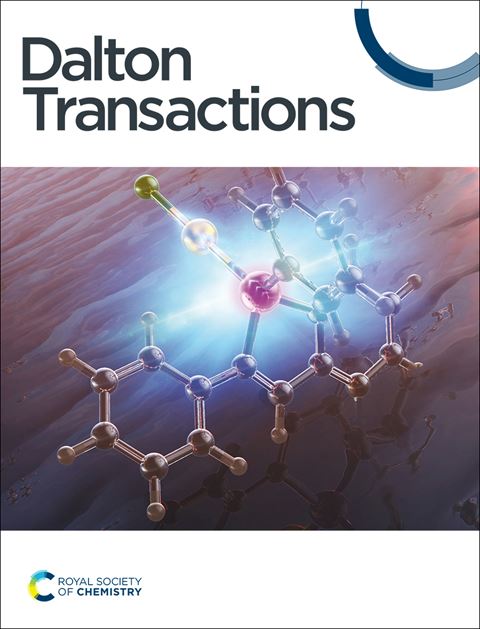Heavier Group 15 Elements: A New Frontier in Molecular Switch Development
IF 3.3
3区 化学
Q2 CHEMISTRY, INORGANIC & NUCLEAR
引用次数: 0
Abstract
Molecular switches—compounds capable of reversibly interconverting between distinct states in response to external stimuli—are foundational to the design of dynamic functional materials. Classical switches based on carbon and lighter pnictogen frameworks, such as stilbenes, azobenzenes, and imines, have long dominated the field owing to their well-defined photophysical properties, synthetic accessibility, and reversible E/Z-isomerization or related transformations. In recent years, significant efforts have been devoted to designing molecular switches incorporating main-group elements—not only to harness the unique attributes of these elements in expanding the frontier of stimuli beyond light and heat, but also to unlock novel mechanistic pathways. In this context, heavier group 15 elements—particularly phosphorus—have emerged as promising platforms for designing responsive molecular frameworks. Advances over the past decade in the synthesis and stabilization of unsaturated phosphorus species—including phosphaalkenes (P=C), diphosphenes (P=P), their heavier analogues (E=E, P=E; E = Sb, Bi), a variety of hypervalent phosphorus compounds, and phosphorus-based (di)radicals—have opened new opportunities in this field. These systems are not limited to classical photo- or thermally induced E/Z isomerization, but also respond to alternative triggers such as metal coordination, redox inputs, and chemical stimuli. Moreover, reactivity modes such as tautomerism, ligand rearrangement, and conformational dynamics provide further avenues for structural interconversion, enriching the scope of pnictogen-based molecular motion. Building upon the well-established paradigms of C=C, N=N, and C=N-based switching systems, this Perspective highlights the evolution and future potential of heavier pnictogen-based molecular switches, with a particular focus on phosphorus-containing frameworks. We examine how E/Z-isomerization, tautomerism, and coordination-driven transformations can be strategically harnessed to develop multifunctional, stimuli-responsive materials. Furthermore, we compare these systems with their lighter main-group analogues and showcase recent advances in their integration into molecular motors, photoresponsive ligands, and other related applications. In doing so, we outline a forward-looking roadmap for the rational design of main-group-based molecular switches and underscore the promise of heavier pnictogens in expanding the molecular design toolkit. We also highlight key challenges that must be addressed to enhance the efficiency of these systems and position them as viable alternatives to classical molecular organic switches.重15族元素:分子开关发展的新前沿
分子开关-能够在不同状态之间可逆地相互转换以响应外部刺激的化合物-是动态功能材料设计的基础。基于碳和较轻的光原框架的经典开关,如二苯乙烯、偶氮苯和亚胺,由于其明确的光物理性质、合成可及性和可逆的E/ z异构化或相关转化,长期以来一直主导着该领域。近年来,人们致力于设计包含主群元素的分子开关,不仅利用这些元素的独特属性来扩展光和热以外的刺激前沿,而且还解锁了新的机制途径。在这种情况下,较重的第15族元素,特别是磷,已经成为设计响应性分子框架的有希望的平台。近十年来不饱和磷的合成和稳定性研究进展,包括磷烯烃(P=C)、二磷烯烃(P=P)及其重类似物(E=E, P=E;E = Sb, Bi)、多种高价磷化合物和磷基(di)自由基等为该领域开辟了新的机遇。这些系统不仅限于经典的光或热诱导的E/Z异构化,而且还响应其他触发因素,如金属配位、氧化还原输入和化学刺激。此外,互变异构、配体重排和构象动力学等反应性模式为结构相互转化提供了进一步的途径,丰富了基于烟原的分子运动的范围。在基于C=C、N=N和C=N的开关系统的成熟范例的基础上,本展望强调了更重的基于烟原的分子开关的发展和未来潜力,特别关注含磷框架。我们研究了如何利用E/ z异构化、互变异构和协调驱动的转化来开发多功能、刺激响应的材料。此外,我们将这些系统与它们较轻的主基团类似物进行比较,并展示了它们在分子马达、光响应配体和其他相关应用中集成的最新进展。在此过程中,我们为基于主群的分子开关的合理设计勾勒了一个前瞻性的路线图,并强调了在扩大分子设计工具包中更重的致病性的承诺。我们还强调了必须解决的关键挑战,以提高这些系统的效率,并将它们定位为经典分子有机开关的可行替代品。
本文章由计算机程序翻译,如有差异,请以英文原文为准。
求助全文
约1分钟内获得全文
求助全文
来源期刊

Dalton Transactions
化学-无机化学与核化学
CiteScore
6.60
自引率
7.50%
发文量
1832
审稿时长
1.5 months
期刊介绍:
Dalton Transactions is a journal for all areas of inorganic chemistry, which encompasses the organometallic, bioinorganic and materials chemistry of the elements, with applications including synthesis, catalysis, energy conversion/storage, electrical devices and medicine. Dalton Transactions welcomes high-quality, original submissions in all of these areas and more, where the advancement of knowledge in inorganic chemistry is significant.
 求助内容:
求助内容: 应助结果提醒方式:
应助结果提醒方式:


